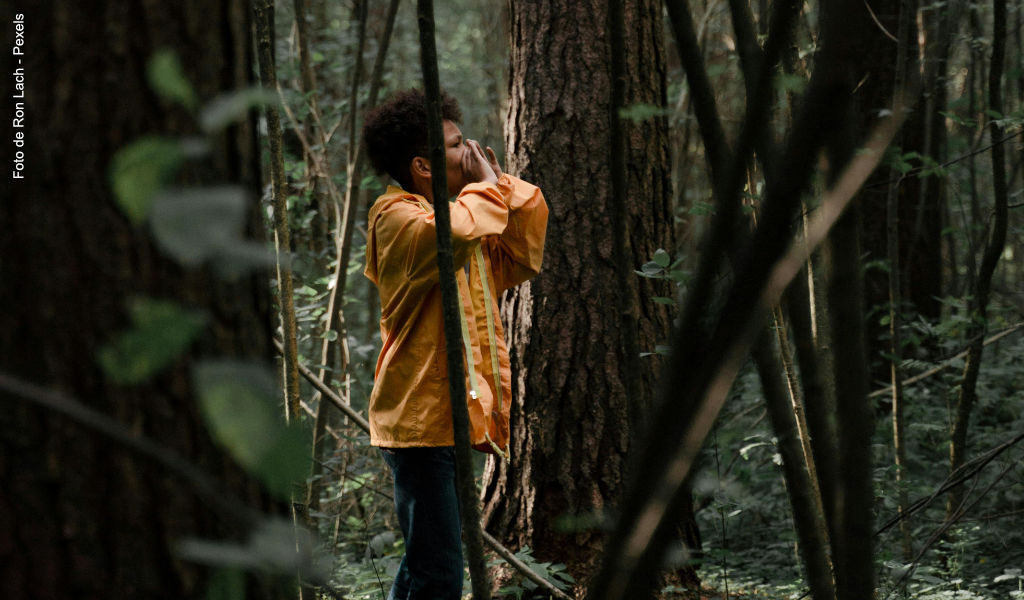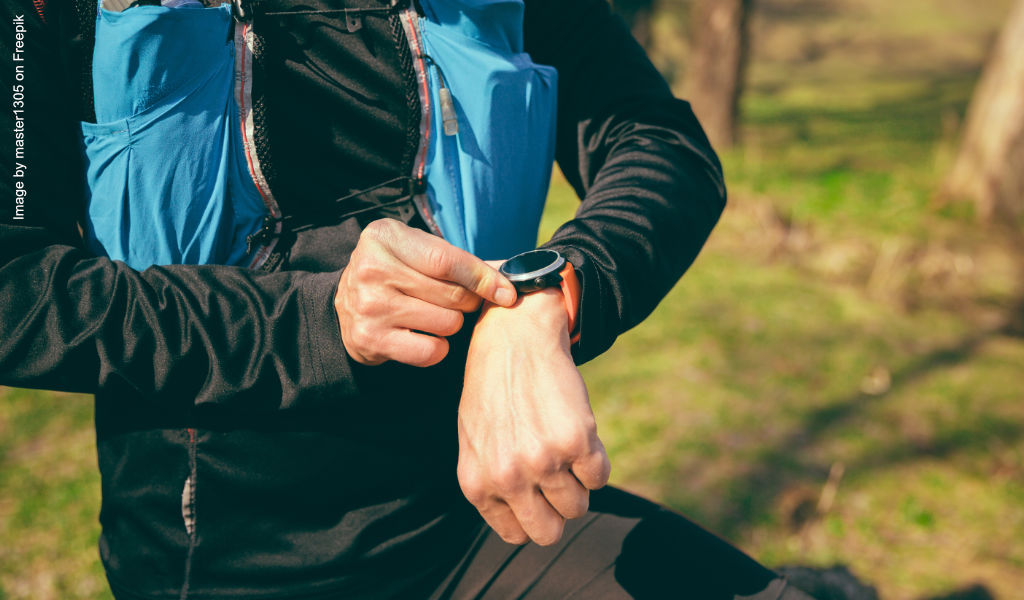Today I want to discuss two aspects related to being lost in the mountains: what to do (how to behave) and medical problems that may develop.
I counted on the collaboration of Alan Jacob da Rosa, founding member of GRM (Grupo de Resgate em Montanha) – a voluntary search and rescue group from SC, who provided us with some planning and behavioral tips so that you have a better chance of being found quickly in case you get lost in the mountains.

Before the activity
Before going out hiking, climbing, or running, seek reliable information about the trail/location and check the weather forecast. Having company is ideal, but if you go on your own, avoid places that are not frequented and try to do the activity during the day, as nighttime orientation is impaired and nighttime rescues carry more risk.
Go with your cell phone fully charged and leave it in airplane mode to preserve the battery. Take a GPS device specific for trails and download the tracklog of the trail you intend to train on; do not use your cell phone as your main navigation tool. Inform family and friends about the training location and the time you plan to return.
During the activity
It is common to rely on the first in line, but it is very important to constantly pay attention to whether you are on the right path; avoid taking shortcuts you do not know. Try not to distance yourself too much from other people in the group to avoid losing sight of anyone.
I Got Lost, Now What?
If you become disoriented during training, follow these steps: Accept the situation… Okay, I’m lost! And follow the acronym (in Portuguese is) E.S.A.O.N:
* Estacionar (Stop): Stay where you are!
* Sentar (Sit): to rest;
* Alimentar-se (Eat): to think more clearly;
* Orientar-se (Orient): calmly try to figure out where you went off the trail;
* Navegar (Navigate): only walk after you are once again oriented to the correct trail direction.
After practicing ESAON and still not finding the trail, STOP! Time to call for rescue!
Find a higher and open place where your cell phone might work. Contact via WhatsApp, informing what happened, your health condition, and if you have resources. Share your location; if you have a GPS or some navigation APP on your cell phone, you can send your coordinates. Call the Fire Department (193). Turn off your cell phone and only turn it on at times agreed with the rescue team to save battery.

I couldn’t get a cell signal, what do I do?
Still, send text messages to your family members; they will remain in the cloud and will be sent the moment the cell phone gets a signal. In these messages, try to provide as much useful information as possible for the rescue team. Such as: landmarks in the landscape, health condition, your resources, coordinates, e.g.: I see a rock wall to the north. I passed by a stream where there was a fixed rope. Write SOS with branches, stones, and pieces of colorful clothing in a clearing. If you see an aircraft, signal with reflective materials such as a mirror, soda can, aluminized blanket, among others.
IMPORTANT! Whether you managed to make contact to call for help or not, avoid moving through the forest unless it is to try for cell signal, find shelter, or collect water and food; otherwise, remain where you are, it is easier to track you if you are stationary!
Build a shelter, make a fire—it will warm you, provide light, protect you from animals, dry clothes, and signal with smoke for rescue. Prioritize using a whistle to try to communicate with the rescue team. Ration your food and water. Remember to mark trees so you can return to your shelter. Take care of your personal hygiene.
If you followed all the planning steps before the activity, your family will notice your absence and call for rescue. Have faith in the rescue, as despair is what leads most people to death in these situations.
Problems that may develop over time and how to prepare to avoid them while waiting for rescue
In addition to some pre-activity preparation such as gathering information about the location you are going to visit, informing someone about your route and expected return time, it is highly recommended that you have a basic first aid kit. With few resources, little volume, and low weight, you can manage small incidents during the activity and avoid/minimize problems that may develop over time in case of unforeseen events or if you get lost on the trail.
Check below some of the main problems that may occur if you have to remain on site overnight or if you get lost on a trail, as well as preventive measures that can help you manage the situations more calmly:
Most accidents and problems in the mountains can be avoided with good planning, good equipment, and good knowledge.
We hope these tips help you be better prepared to deal with unexpected situations, but remember that you are responsible for your safety. Weight and volume are important considerations in the mountains, but do not sacrifice your safety for a few extra grams of a PS kit, water, and food in adequate quantity, and an anorak, as they can save your life! And remember, knowledge is never too much.
Happy adventures!
Alan Jacob da Rosa has been a trail runner since 2014, a mountaineer and climber since 2001, holds a bachelor’s degree in nursing, a volunteer mountain rescuer since 2010, and a founding member of GRM (2012).
This post is also available in: Português (Portuguese (Brazil)) Español (Spanish)
